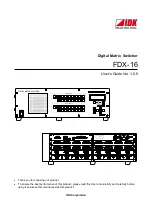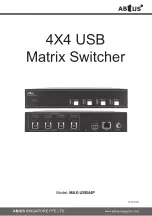
[
remark-8021p
8021p-value
|
remark-dscp
dscp-value
] } ] [
yellow
{
drop
|
pass
[
remark-8021p
8021p-value
|
remark-dscp
dscp-value
] } ] [
red
{
drop
|
pass
[
remark-8021p
8021p-value
|
remark-dscp
dscp-value
] } ] ]
Traffic policing is configured for the incoming packets matching an ACL rule on an
interface.
Or, run:
traffic-limit
outbound
{
acl
{ [
ipv6
] {
bas-acl
|
adv-acl
|
name
acl-
name
} |
l2-acl
} } [
rule
rule-id
]
cir
cir-value
[
pir
pir-value
]
[
cbs
cbs-value
pbs
pbs-value
] [ [
green
{
drop
|
pass
[
remark-8021p
8021p-value
|
remark-dscp
dscp-value
] } ] [
yellow
{
drop
|
pass
[
remark-8021p
8021p-value
|
remark-dscp
dscp-value
] } ] [
red
{
drop
|
pass
[
remark-8021p
8021p-value
|
remark-dscp
dscp-value
] } ] ]
Traffic policing is configured for the outgoing packets matching an ACL rule on an
interface.
NOTE
The colors of packets can be defined in traffic policing:
l
When the size of a packet is less than the value of
cbs-value
, the packet is colored green.
l
When the size of a packet is greater than or equal to the value of
cbs-value
but less than
the value of
pbs-value
, the packet is colored yellow.
l
When the size of a burst packet is greater than or equal to the value of
pbs-value
, the packet
is colored red.
By default, green packets and yellow packets are allowed to pass through, and red packets are
discarded.
When the
traffic-limit
command and the
traffic-filter (interface view)
or
traffic-filter
(system view)
command are used simultaneously, and the same ACL rule is associated:
l
If the deny action is configured in the ACL rule, the
traffic-limit
command does not take
effect.
l
If the permit action is configured in the ACL rule, the
traffic-limit
command takes effect.
A Layer 2 ACL and a Layer 3 ACL can be set in the
traffic-limit
command simultaneously.
The Layer 3 ACL and its rules can be configured only after the Layer 2 ACL and its rules are
configured. The Layer 2 ACL number ranges from 4000 to 4999 and the Layer 3 ACL number
ranges from 2000 to 2999 or 3000 to 3999.
To configure both Layer 2 ACLs and Layer 3 ACLs on an inbound interface of a switch, use
the following command:
traffic-limit
inbound
acl
{
l2-acl
|
name
acl-name
} [
rule
rule-id
]
acl
{
bas-acl
|
adv-acl
|
name
acl-name
} [
rule
rule-id
]
cir
cir-value
[
pir
pir-value
] [
cbs
cbs-value
pbs
pbs-
value
] [ [
green
{
drop
|
pass
[
remark-8021p
8021p-value
|
remark-dscp
dscp-value
] } ]
[
yellow
{
drop
|
pass
[
remark-8021p
8021p-value
|
remark-dscp
dscp-value
] } ] [
red
{
drop
|
pass
[
remark-8021p
8021p-value
|
remark-dscp
dscp-value
] } ] ]
To configure both Layer 2 ACLs and Layer 3 ACLs on an outbound interface of a switch, use
the following command:
traffic-limit
outbound
acl
{
l2-acl
|
name
acl-name
} [
rule
rule-id
]
acl
{
bas-acl
|
adv-acl
|
name
acl-name
} [
rule
rule-id
]
cir
cir-value
[
pir
pir-value
] [
cbs
cbs-value
pbs
pbs-
value
] [ [
green
{
drop
|
pass
[
remark-8021p
8021p-value
|
remark-dscp
dscp-value
] } ]
[
yellow
{
drop
|
pass
[
remark-8021p
8021p-value
|
remark-dscp
dscp-value
] } ] [
red
{
drop
|
pass
[
remark-8021p
8021p-value
|
remark-dscp
dscp-value
] } ] ]
----End
S3700HI Ethernet Switches
Configuration Guide - QoS
1 Class-based QoS Configuration
Issue 01 (2012-03-15)
Huawei Proprietary and Confidential
Copyright © Huawei Technologies Co., Ltd.
30
















































